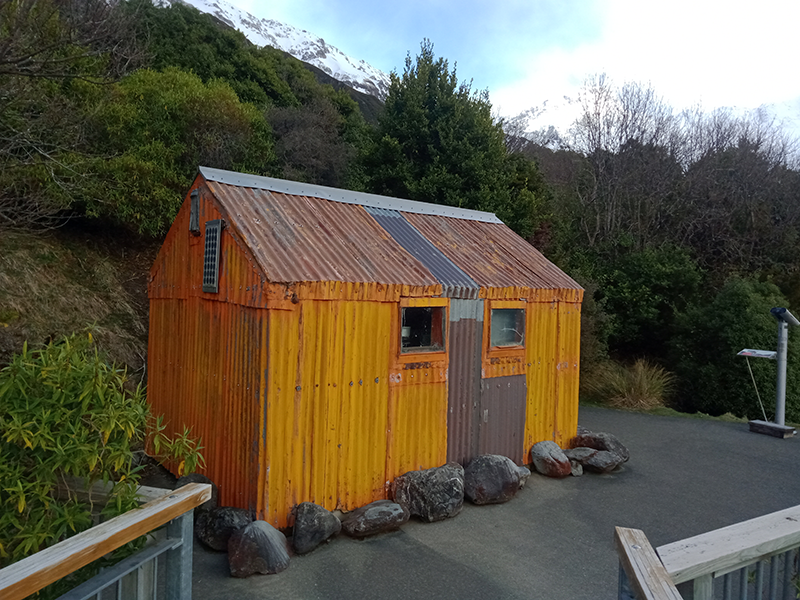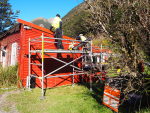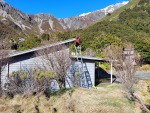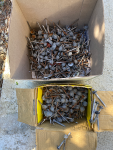Saving The Kea

Dimond Roofing has partnered with the Kea Conservation Trust (KCT) to protect one of the country’s most beloved native birds – the kea.
As a not-for-profit organization, removal of the lead threat to the kea population is an expensive and time-consuming project for KCT which is where Dimond Roofing, as a leading supplier of quality roofing products, has stepped in as a partner to the programme.
Kea is the world’s only alpine parrot, and only 7,000 are believed to remain in the wild which makes Dimond’s role in the conservation efforts for kea in their native habitat in the mountains of the Southern Alps a major contribution to conservation and the environment.
Shane Pratt, National Marketing and Channel Manager for Dimond says the work is in KCT’s lead reduction programme – removing lead flashings and nail heads from the roofs of buildings in areas where they are accessible to keas and replacing the offending lead items with safe, non-toxic alternatives.
Many items used on roofing in the past have lead components that are dangerous to kea who like to chew on these fixtures. Kea tend to live in more remote areas but dwellings around where humans reside prove very popular to explore but often contain significant quantities of lead components – think flashings and nail-heads.
Dimond Roofing’s alliance with KCT is focused on existing buildings throughout the Queenstown and Lakes District of front country sites (around human habitation) which have proved to be hot spots for lead poisoning in the kea population. The removal and replacement programme is a free service to landowners.
As a not-for-profit organization, this is an expensive and time-consuming project for KCT which is where Dimond step in as a supporter, contributing to the material costs of the project.
Says Shane Pratt: “The seamless partnership with both KCT and Dimond makes it possible to play a key role in the kea conservation effort – partly due to the convergence of company values.
“We are all about roofing that benefits the environment rather than taking away from it”, says Shane. “Dimond is working hard to grow our environmental accreditations and this includes Green Tag certification.
“KCT is about helping kea survive and thrive and they do this by promoting a greener environment which fits with our values.”
Since announcing the partnership with KCT Dimond Roofing is pursuing other initiatives to celebrate the alliance – the goal being to spread awareness of the partnership both internally and externally to customers and the wide public via signage at Dimond’s South Island branches and on company trucks.
Sometimes called the ‘clown of the mountains’, kea is valued as one of the most intelligent bird species in the world. Curious, bold and highly social, kea like to check out skis, boots, snowboards and even cars – windscreen wipers in particular.
Lead poisoning is a serious issue for kea and their curiosity with lead items can cause serious illness and even death. All age groups of kea sampled near some of the older dwellings in the mountainous, remote regions of the Southern Alps have been found to have significantly higher blood lead levels.
Kea have been observed chewing lead fixtures and damage to lead-bearing buildings has been observed. Any level of lead exposure is considered unsafe as lead can have effects that compromise survival (depressed immune function, impaired development, decreased cognitive function) as well as causing illness and even death.
Peter Fraser, a founding member of KCT and the co-ordinator of the Jobs for Nature lead reduction programme, says the aim is to have 350 buildings de-leaded by the end of 2023. The first buildings were completed last year when the partnership with Dimond Roofing was announced at the end of 2021.
“The scale of this exercise is huge but the process is quite detailed as we have to focus on what we know are hot spots”, says Peter. “To identify these buildings - many of which are very old - keas need to be banded and a blood test taken to measure lead contamination.”
Arthur’s Pass has been an area of interest with approximately 100 properties - baches and houses in the village - where keas have tested positive for lead poisoning. Property owners have responded enthusiastically with KCT’s kea conservation initiative. The first area of measured kea lead contamination was Mt Cook Village and that became ground zero for this campaign when replacement of lead details was first carried out.
The next target area is Takaka-Golden Bay where already 100 properties are identified for removal of lead detail, all with “Kea Safe” non-toxic alternatives supplied by Dimond.
Says Peter: “What is really interesting is that after 2023, when KCT aims to have completed all lead-contaminated huts and buildings, we should have removed the majority of the lead sources causing so much damage and endangering the lives of the precious and unique kea population. If a bird tests positive for lead poisoning we will have fewer sources to investigate”.




